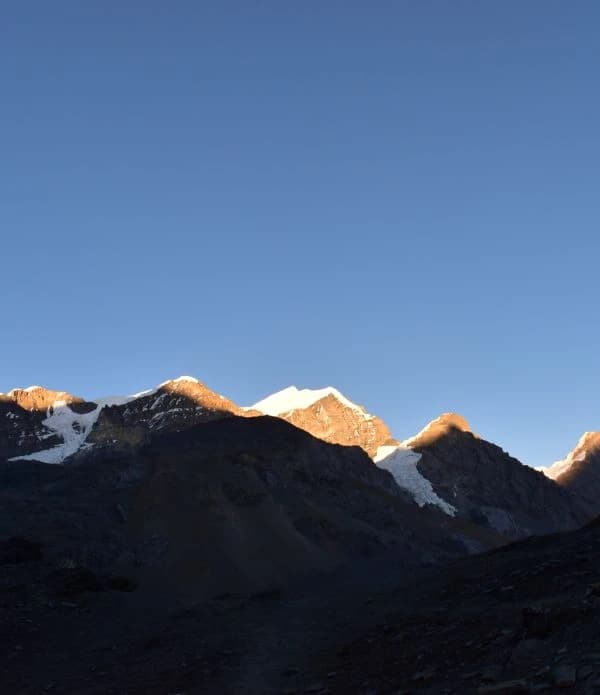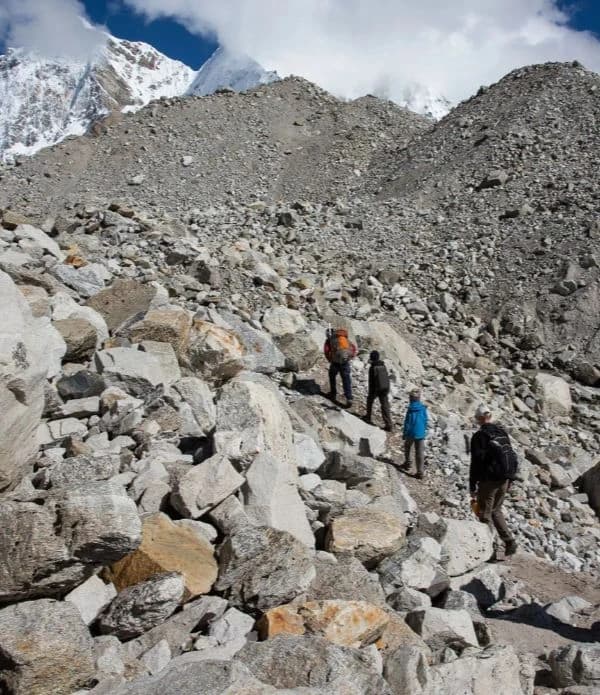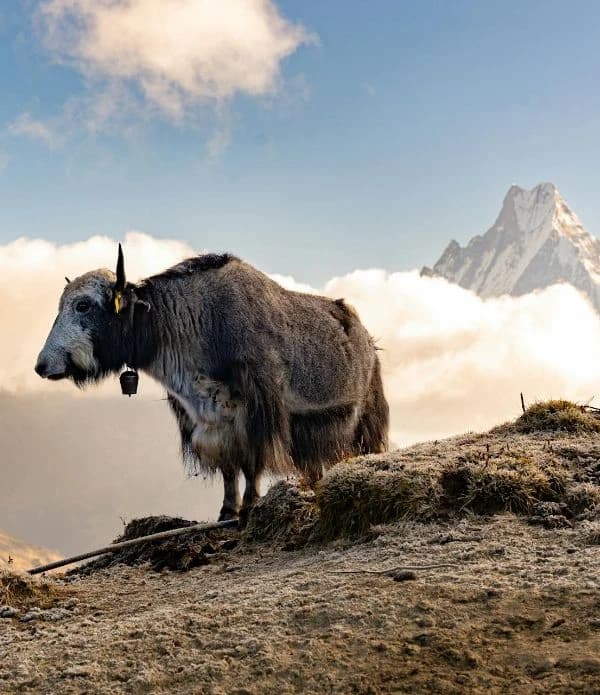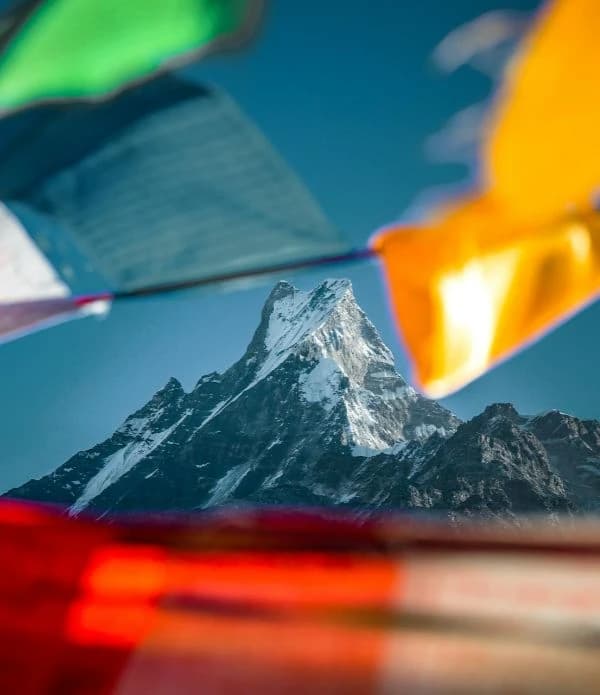Before you lace up your boots and set off for the breathtaking Manaslu region, take a moment to sort out your paperwork. Trekking in this region isn’t just about the stunning views and peaceful trails - it’s also about respecting local regulations and protecting the culture and environment along the way. That’s where permits come in. Don’t skip them. They’re not just formalities - they’re your way of trekking responsibly.
Make sure you have all the necessary permits for the Manaslu region. This includes the Manaslu Restricted Area Permit (RAP), Manaslu Conservation Area Permit (MCAP), and Annapurna Conservation Area Permit (ACAP). Each permit serves a unique purpose, but together, they help protect this fragile region, support local communities, and keep you safe on the trail. Your guide and trekking agency will assist with the paperwork, but it’s still good to understand what each permit does and why it’s important.
You might also need additional permits depending on your specific route. Planning to explore Tsum Valley or pass through Chumnubri? Be sure to get those extra permissions. And if your trek begins or ends in the Annapurna region, don’t forget the TIMS Card. Always double-check your itinerary and ensure your permits match.
Now that you have a general idea of what to expect, let’s dive deeper into the permits you'll need for the trek.
Mandatory Permits for the Manaslu Region Trek
|
Treks
|
Mandatory Permits
|
|---|---|
|
|
|
|
|
Manaslu Restricted Area Permit (RAP)
You’ll need a Manaslu Restricted Area Permit for treks like the Manaslu Circuit or if you're combining it with Tsum Valley. This permit isn’t required for Tsum Valley alone unless you plan to continue toward Samagaon, Larkya La Pass, or Dharapani.
The permit is issued by the Government of Nepal and applies to the section between Jagat and Dharapani. This region is protected for its rich culture, fragile environment, and proximity to the Tibetan border. To keep it safe and respected, all trekkers must obtain the RAP and travel with a licensed guide. You also need to book through a government-registered trekking agency.
Your guide will carry the MRAP and show it at every checkpoint - but keep a copy with you as well. This pass is your legal entry into the restricted zone. Without it, you won’t get past checkpoints and could face fines or legal trouble.
The MRAP is only valid for the number of days you’re in the restricted area, so plan your itinerary carefully. Only registered agencies can get this permit for you. They’ll coordinate with the Department of Immigration in Kathmandu to handle everything.
Here’s how it works: book your trek, send your documents to the agency, and they’ll take care of the application. By the time you arrive, your permits will be ready.
What You’ll Need:
- A scanned copy and a photocopy of your valid passport
- One passport-sized photo
- A scanned photo for the online form
- Your trekking itinerary and dates
- A confirmed booking with a government-registered trekking agency
- Details of your licensed guide (your agency will handle this)
- Travel insurance with helicopter rescue coverage
- Nepal tourist visa
Get these ready ahead of time, and let your agency handle the rest. Focus on what matters most - enjoying the stunning views, peaceful trails, and warm smiles of the Manaslu region.
Manaslu Restricted Area Permit (RAP) Cost
The cost of the RAP depends on the season and how long you stay in the restricted area.
|
Nationality
|
September - November
|
December - August
|
|---|---|---|
|
Foreginers
|
USD 100 for first 7 days + USD 15 per additional days
|
USD 75 for first 7 days + USD 10 per additional days
|
|
SAARC (including India)
|
Same as foreigners
|
Same as foreigners
|
|
Nepali Citizens
|
Not required
|
Not required
|
Autumn is the most popular time to trek, with clear skies and perfect weather, but the permits cost more. If you want to save money and avoid crowds, visit between December and August. While the weather might not be as perfect, the trails are quieter, and permits are cheaper.
Plan your trek wisely. Whether you prefer crisp autumn skies or peaceful off-season paths, make the most of your time and budget in this amazing region.
Note: Children under 10 don’t need permits. Also, you must trek in a group of at least two, arranged through a registered agency.
Manaslu Conservation Area Permit (MCAP)
You’ll need a Manaslu Conservation Area Permit (MCAP) for treks like the Manaslu Circuit, Tsum Valley, or an itinerary that combines both. Like the RAP, this permit must be arranged through a government-registered trekking agency.
You only need to get this permit once. There are no daily fees or seasonal charges - just a one-time payment for the entire conservation area. It’s non-transferable and non-refundable once issued. To make the process easier, let your trekking agency handle it. If you’re trekking with Himalayan Massif Trek, we’ll take care of everything for you.
This permit covers the wider conservation area outside the restricted zone. You’ll need it right from the start of the trail, whether you begin in Arughat, Machha Khola, or beyond. Plus, the MCAP is valid for 365 days from the date of issue, and its cost remains the same year-round. Also, children under 10 don't need this permit.
The Nepal Tourism Board (NTB) issues the permit in Kathmandu and Pokhara, but you can pick it up at the checkpoint in Philim if you miss it in the cities. Your permit fee helps support conservation efforts, protect the region’s biodiversity, and fund sustainable tourism and local community projects.
Furthermore, you only need to pay for the MCAP once, with no daily or seasonal charges. It’s non-transferable and non-refundable once issued. To make things easier, let your trekking agency handle the process. If you're trekking with Himalayan Massif Trek, we’ll take care of everything for you.
What You’ll Need:
To get your Manaslu Conservation Area Permit (MCAP), make sure you have the following ready:
- A copy of your valid passport
- One passport-sized photo
- The permit fee
- Your Nepalese visa
- Travel insurance including coverage for helicopter evacuation
Manaslu Conversation Area Permit Cost
|
Nationality
|
Cost Per Person
|
|---|---|
|
Foreigners
|
USD 30
|
|
SAARC (Including India)
|
NPR 1000
|
|
Nepali citizens
|
NPR 100
|
Annapurna Conservation Area Permit (ACAP)
The Manaslu Circuit mostly takes you through the Manaslu region. But the final stretch of the trek - from Dharapani to Besisahar - passes through the Annapurna Conservation Area. So, you’ll need the Annapurna Conservation Area Permit (ACAP) to legally and responsibly complete your journey.
This permit is more than just a requirement. Your ACAP fee supports conservation efforts and helps protect Annapurna’s natural beauty. At the same time, it also contributes to local community development across the region.
Additionally, the ACAP permit remains valid for 365 days from the date it’s issued. So if you're planning to return and trek in the Annapurna region again - like the Annapurna Circuit or Annapurna Base Camp - you won’t need to pay for it twice. Many of our trekkers have done just that and saved both time and money.
What You’ll Need:
- To get your ACAP, you need to have these ready:
- A copy of your valid passport
- One passport-sized photo
- The permit fee in cash
Annapurna Conversation Area Permit Cost
|
Nationality
|
Cost Per Person
|
|---|---|
|
Foreigners
|
USD 30
|
|
SAARC (Including India)
|
NPR 1000
|
|
Nepali Citizens
|
NPR 100
|
The permit is issued by the Nepal Tourism Board (NTB) in both Kathmandu and Pokhara. If you’re arranging everything through a registered agency, they’ll sort this out as part of your trek preparation.
Note: Hiring a licensed guide isn’t mandatory for the Annapurna region. However, since your trek begins in the Manaslu region - where a guide is required - you’ll still need one even as you finish in the Annapurna section.
Region-Specific Area Permits
Tsum Valley Restricted Area Permit
Tsum Valley lies hidden north of the Manaslu Circuit. It is a peaceful, spiritual region shaped by Tibetan Buddhist culture. To trek here, you must get a Tsum Valley Restricted Area Permit through a licensed trekking agency.
Because of its remoteness and cultural importance, the Nepal government protects the Tsum Valley. This special permit supports sustainable tourism and helps preserve the valley’s unique way of life.
Solo trekking isn’t allowed. You must travel in a group of at least two trekkers with a registered guide to enter the area legally and responsibly.
What You’ll Need:
- A copy of your valid passport
- One passport-sized photo
- Your trekking itinerary and travel dates
- The permit fee (varies by season)
Tsum Valley Restricted Area Permit Cost
|
Nationality
|
September - November (peak season)
|
December - August (off-season)
|
|---|---|---|
|
Foreigners
|
USD 40 for the first 7 days + USD 7 per additional days
|
USD 30 for the first 7 days + USD 5 per extra days
|
|
SAARC (Including India)
|
USD 40 for the first 7 days + USD 7 per additional days
|
USD 30 for the first 7 days + USD 5 per extra days
|
|
Nepali citizens
|
NPR 200 for the first 7 days + NPR 50 per extra days
|
NPR 150 for the first 7 days + NPR 40 per extra days
|
The permit is only valid for the official Tsum Valley route. If you plan to stay longer, you’ll need to pay for additional days.
From September to November, the cost is slightly higher due to peak trekking season. If you’re looking to save, consider visiting between December and August, when the fees are lower and the trails are quieter.
As for the paperwork, let your trekking agency sort the paperwork while you focus on preparing for the journey ahead. With the right permit in hand, you’re all set to discover the peaceful beauty and timeless charm of Tsum Valley.
Note: A Manaslu Conservation Area Project (MCAP) permit is a must for the Tsum Valley trek because the trail is located in the Manaslu region.
Chumnubri Rural Municipality Permit
The Chumnubri region covers a large part of the Manaslu Circuit and Tsum Valley trails, including well-known villages like Samagaon and Samdo. As you trek through this area, you’ll pass through lands governed by the Chumnubri Rural Municipality. It plays a big role in managing the region’s tourism and development.
To enter this area legally and respectfully, you must get a Chumnubri Rural Municipality Permit. This local permit helps fund rural infrastructure and supports the communities that host trekkers along the way.
While this permit isn’t part of the national park system, it’s just as important - and compulsory for all treks in the Manaslu region.
What You’ll Need:
- A copy of your valid passport
- One passport-sized photo
- Your trekking itinerary and travel dates
- The permit fee (varies by season)
Chumnubri Rural Municipality Permit Price
|
Season
|
Duration
|
Fee Per Person
|
|---|---|---|
|
September – November
|
First 7 days
|
USD 100 (Each additional day USD 15)
|
|
December – August
|
First 7 days
|
USD 75 (Each additional day USD 10)
|
You can get this permit from the Chumnubri Rural Municipality office in Gorkha or through a registered trekking agency. Even though it’s possible to obtain it independently, most trekkers let their agency take care of it. If you're trekking with us at the Himalayan Massif Trek, we’ll handle everything for you - no stress on your end.
Moreover, solo trekking isn’t allowed in this region. You’ll need to be in a group of at least two trekkers with a licensed guide to get the permit.
Note: While obtaining a Chumnubri Rural Municipality entry card, you will also need a TIMS (Trekkers' Information Management System) card.
Non-mandatory Trekking Permits
TIMS (Trekkers’ Information Management System) Card
The TIMS Card helps keep trekkers safe across Nepal. It tracks your route, supports emergency rescues, and adds an extra layer of organization to your adventure. While it's mandatory for many trekking regions, you won’t need a TIMS Card for Manaslu region treks. That’s because you're already carrying the Manaslu Restricted Area Permit, Manaslu Conservation Area Permit, and Annapurna Conservation Area Permit.
However, if your trek begins or ends in Dharapani, you must get a TIMS Card before setting out. The same applies if you plan to extend your journey into the Annapurna region - towards Muktinath, Jomsom, or Pokhara.
What You’ll Need:
- A valid passport with at least six months remaining
- A valid Nepali visa
- Two passport-sized photos
- A completed TIMS application form
- Trekking Itinerary
- Travel insurance with helicopter rescue coverage
TIMS (Trekkers’ Information Management System) Card Cost
|
Nationality
|
Cost Per Person
|
|---|---|
|
Foreigners
|
NPR 2000
|
|
SAARC Nationals (Including India)
|
NPR 1000
|
|
Nepali Citizens
|
Not required
|
You can get your TIMS Card at the TAAN (Trekking Agencies’ Association of Nepal) offices in Kathmandu or Pokhara. Entry Permit Counters are also open in Besisahar (Lamjung) and the Nepal Tourism Board offices in both cities. They’re open Sunday to Friday, 9 am to 5 pm, except public holidays.
Conclusion
The Manaslu region is an extraordinary place to explore, but trekking here requires more than just a sense of adventure. With the right permits, you're not only staying within the law but also supporting the local communities and conservation efforts. The process may seem a bit detailed, but with the help of a licensed guide and trekking agency, everything will fall into place.
So, before setting off, double-check that you have all the necessary permits in hand. Planning ahead will ensure a smoother trek. It will also let you focus on what really matters - experiencing the beauty of the Manaslu region and connecting with its people and culture.
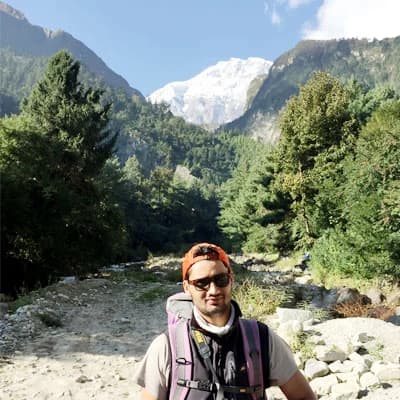
.webp&w=3840&q=75&dpl=dpl_5no2mbdoNHZofbQzNp4xwNy1a21g)
.webp&w=1200&q=75&dpl=dpl_5no2mbdoNHZofbQzNp4xwNy1a21g)
